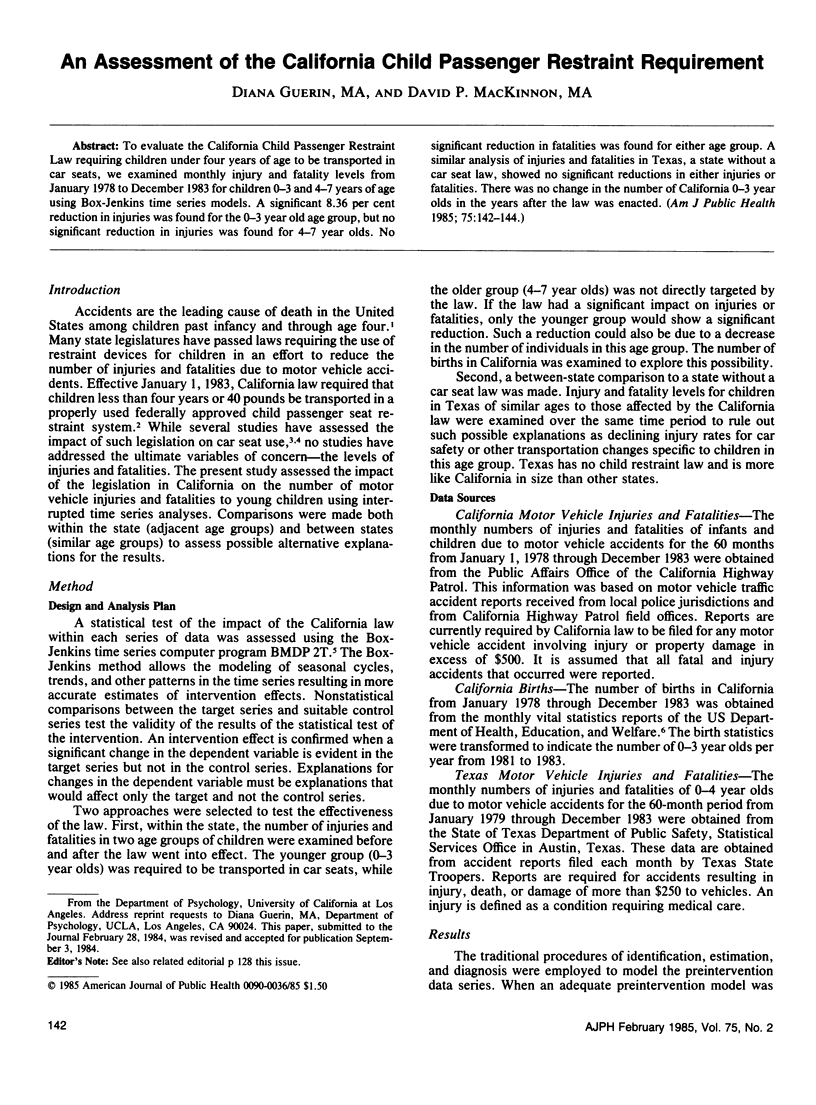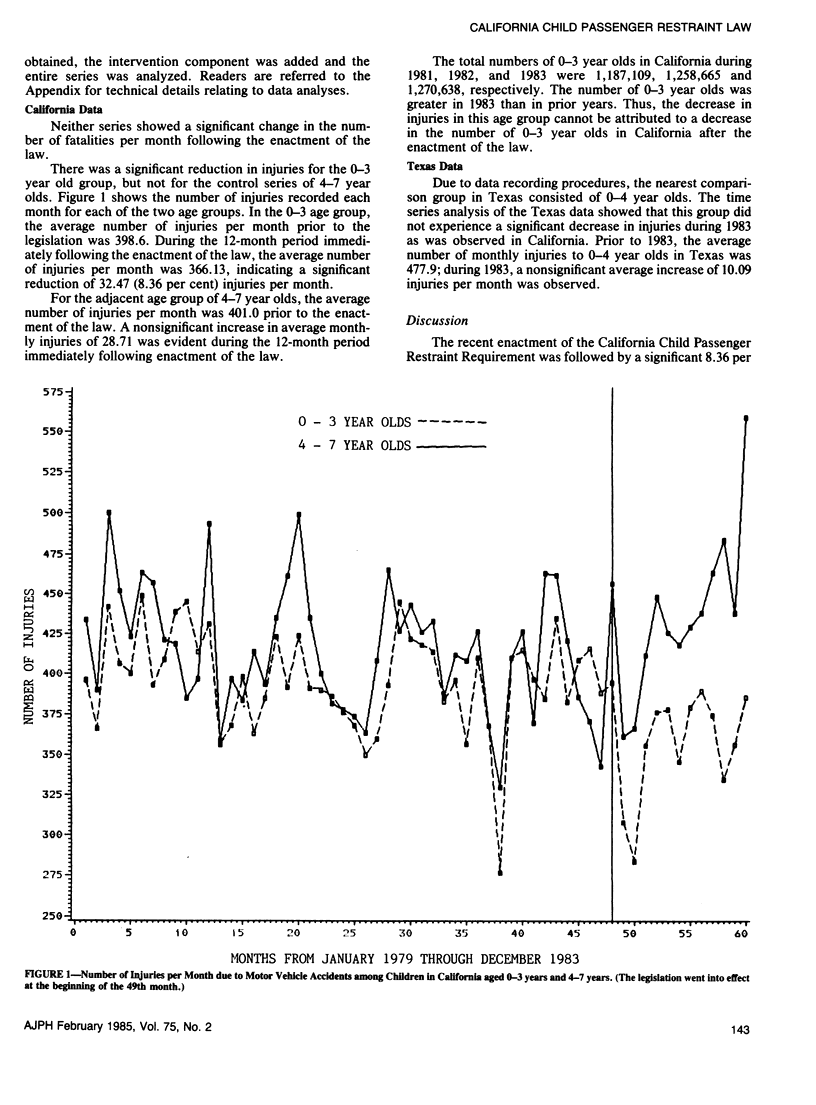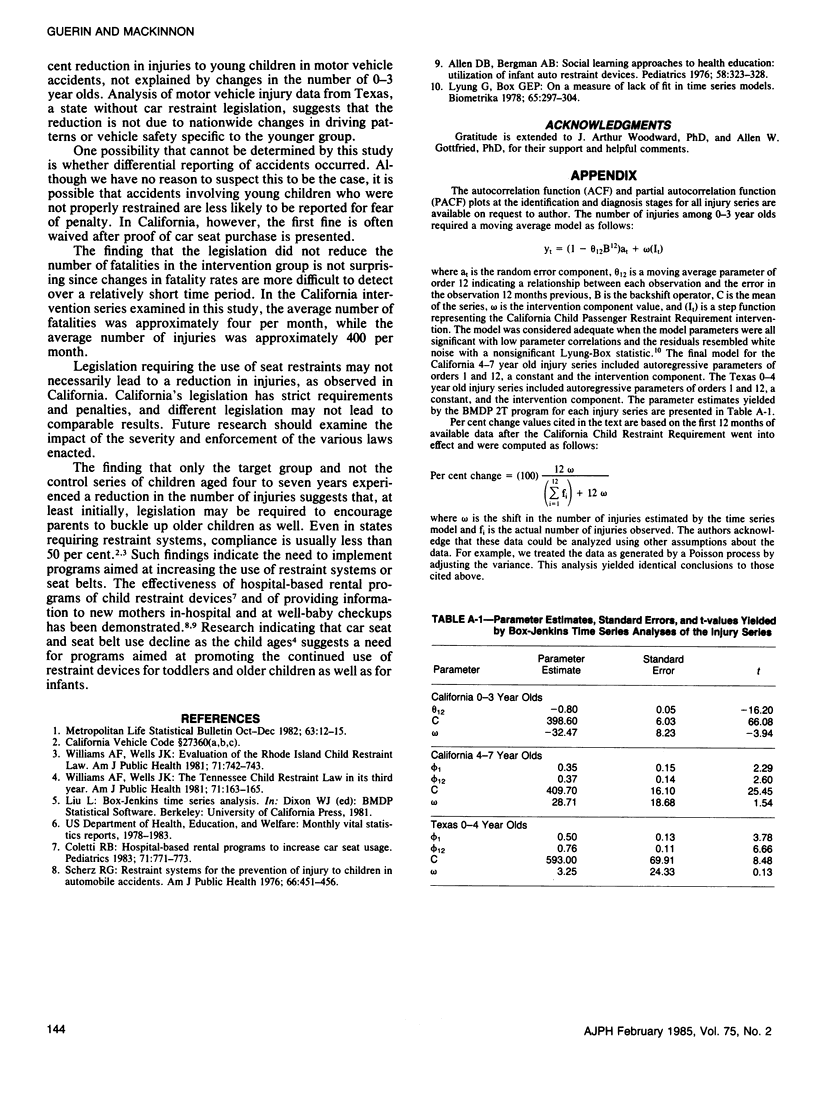Abstract
To evaluate the California Child Passenger Restraint Law requiring children under four years of age to be transported in car seats, we examined monthly injury and fatality levels from January 1978 to December 1983 for children 0-3 and 4-7 years of age using Box-Jenkins time series models. A significant 8.36 per cent reduction in injuries was found for the 0-3 year old age group, but no significant reduction in injuries was found for 4-7 year olds. No significant reduction in fatalities was found for either age group. A similar analysis of injuries and fatalities in Texas, a state without a car seat law, showed no significant reductions in either injuries or fatalities. There was no change in the number of California 0-3 year olds in the years after the law was enacted.
Full text
PDF


Selected References
These references are in PubMed. This may not be the complete list of references from this article.
- Allen D. B., Bergman A. B. Social learning approaches to health education: utilization of infant auto restraint devices. Pediatrics. 1976 Sep;58(3):323–328. [PubMed] [Google Scholar]
- Colletti R. B. Hospital-based rental programs to increase car seat usage. Pediatrics. 1983 May;71(5):771–773. [PubMed] [Google Scholar]
- Scherz R. G. Restraint systems for the prevention of injury to children in automobile accidents. Am J Public Health. 1976 May;66(5):451–456. doi: 10.2105/ajph.66.5.451. [DOI] [PMC free article] [PubMed] [Google Scholar]
- Williams A. F., Wells J. K. Evaluation of the Rhode Island child restraint law. Am J Public Health. 1981 Jul;71(7):742–743. doi: 10.2105/ajph.71.7.742. [DOI] [PMC free article] [PubMed] [Google Scholar]
- Williams A. F., Wells J. K. The Tennessee child restraint law in its third year. Am J Public Health. 1981 Feb;71(2):163–165. doi: 10.2105/ajph.71.2.163. [DOI] [PMC free article] [PubMed] [Google Scholar]


